Understanding how coastal vertebrates interact with plastic pollution is important for assessing their vulnerability and their value as bioindicators of environmental change. Seals and birds, both common in estuarine and nearshore habitats, are exposed to plastic through different pathways. Seals may ingest microplastics primarily through prey, or contact with contaminated seawater and sediments, while birds are known to use plastic materials in their nests. This study investigated how these two groups reflect local plastic pollution, using fecal analysis for seals and nest surveys for birds. The types of plastics found matched those recorded in environmental litter data, suggesting a link between local pollution and wildlife exposure. Although seals and birds differ in behavior and ecology, both showed clear evidence of interaction with plastic debris. This highlights a shared risk and supports their use as indicators of plastic exposure. Non-invasive methods, such as analyzing feces and photographing nests, can help monitor plastic pollution in a practical and low-impact way. As human activities continue to shape coastal environments, these species can offer valuable insight into how plastic enters and affects marine ecosystems.
promotor/supervisor feedback
nothing yet




